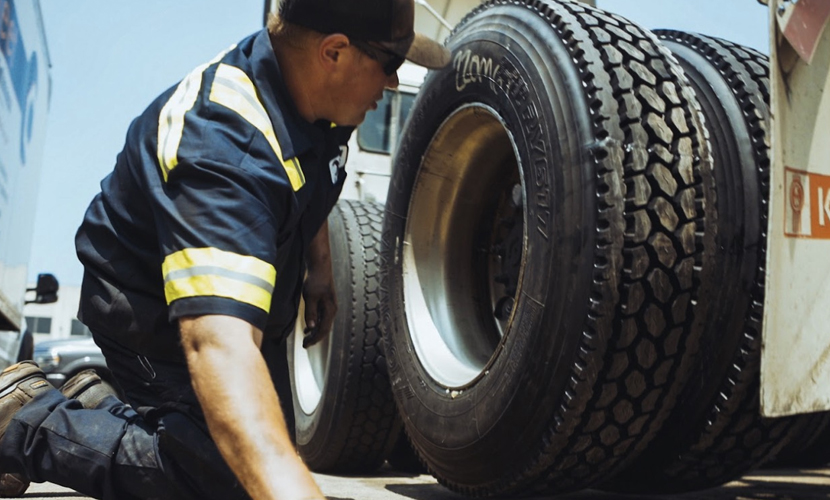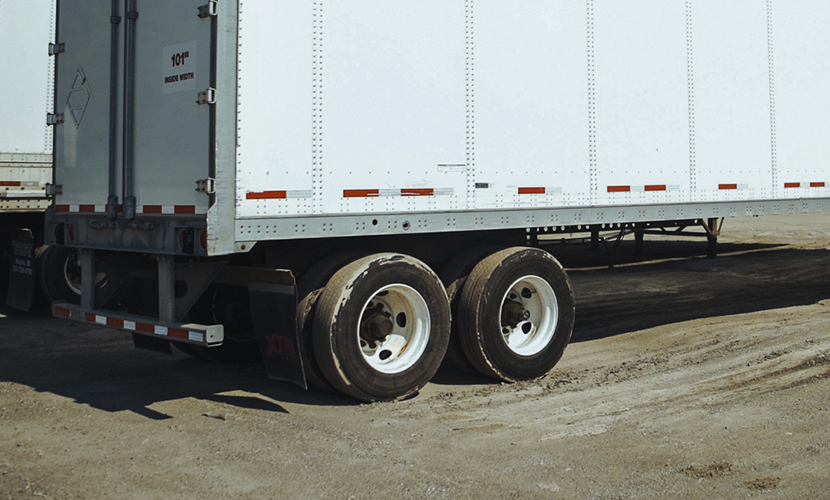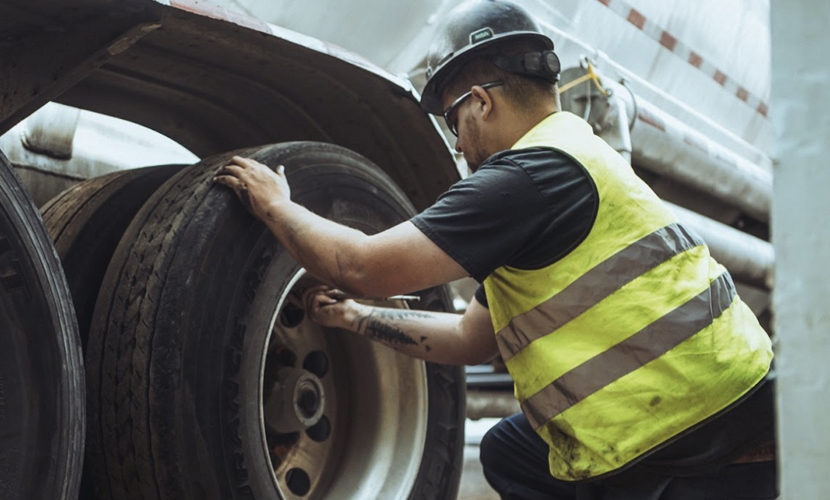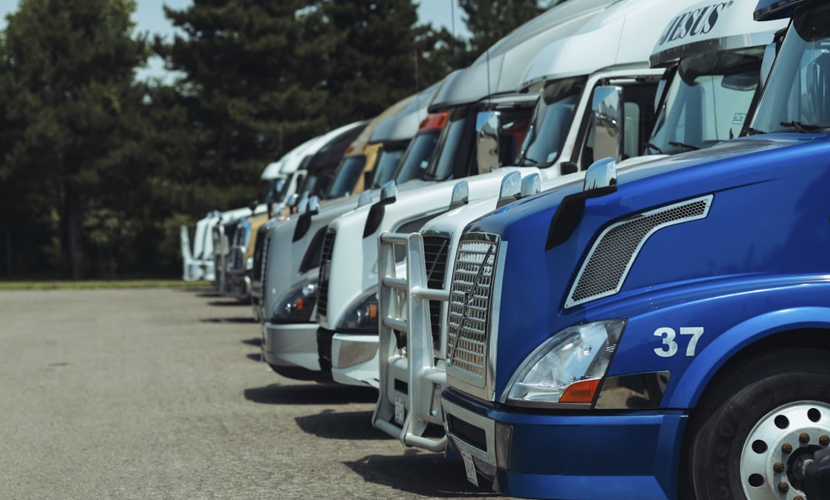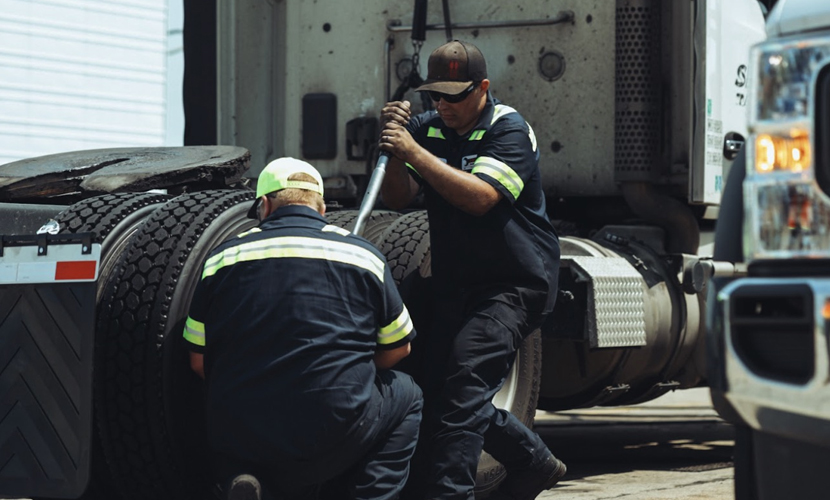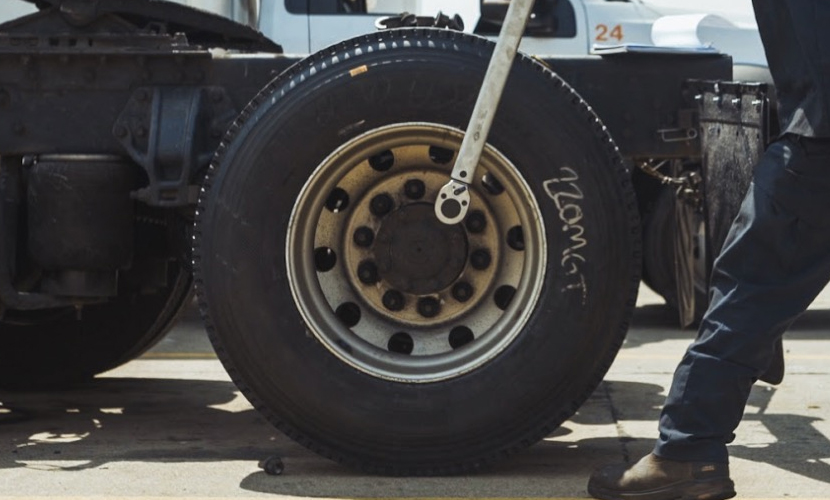The True Cost of Low Tire Pressure on Fleet Trucks
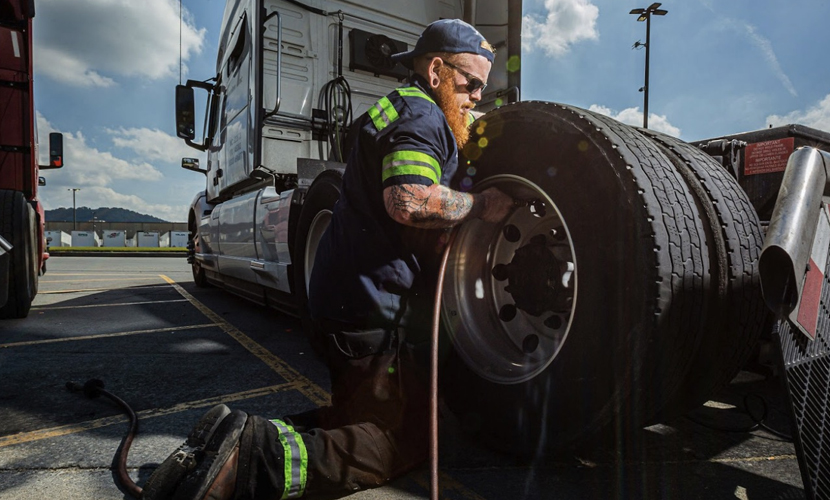
Tire inflation is, to the surprise of many, one of the single most impactful metrics on the performance of a truck and a fleet across the board. It can have an incredible effect across the board in terms of performance, operating costs, and even safety. Unfortunately, most of those effects are at the fleet level and across the long term, so it’s easy for individual drivers to ignore them for the time being, never knowing the full extent of the cost.
Tires are one of the most expensive individual components of a truck, so treating them right is paramount to long-term success. Let’s dig deeper into the issue and see what the best practices are for a fleet manager.
The Replacement Cost for a Truck Tire
First, let’s consider the cost of replacing a tire when it wears out or, worse, goes flat or blows out in operation.
Individual tires of average quality can cost between $250 and $600; however, premium-tier high-quality tires or specialty tires can cost $1,200 or even more. If your trucks operate in areas with special conditions, like snow and ice, steep hills, or particularly rough roads, those tires can cost even more.
Factors that influence the cost of replacing these tires include:
- The size and weight of the truck. Larger trucks, larger trailers, bigger tires, more expensive rubber. The heavier the expected load, the better the tires need to be to avoid premature failure.
- The type of the tire. It’s not just about conditions like winter versus summer tires; it’s about where the tires are on the truck. Steer tires, in particular, are critical to the performance of the truck.
- Tire hardness. Harder tires are more resilient, but they’re less forgiving. Softer tires are often preferred by drivers because they offer a smoother, more comfortable ride, but they wear out faster and will need replacement more often.
- Tire warranty. No product is free of defects, and a good warranty can go a long way for a heavily used part like a truck tire. Good warranties, however, are expensive.
Of course, the raw cost of replacing a tire is just a small part of the overall consideration when tires are concerned.
What Happens When a Tire is Under-Inflated?
Keeping a tire at a lower pressure than it’s meant to be has a bunch of negative effects. According to Sharon Cowart from Michelin, it’s the number one cause of “premature tire removal.”
So, what happens when a tire isn’t inflated properly?
- The truck won’t handle as expected. This applies whether it’s a single tire that’s under-inflated or if all the tires on the truck are under-inflated. Tires are designed to function best at specific pressures, and deviations from this can compromise handling.
- Underinflated tires wear differently. A tire that isn’t inflated to the correct pressure won’t distribute its load effectively, leading to uneven wear on both itself and the other tires. Furthermore, this imbalance can stress the underinflated tire even more. It’s essential to understand that both underinflated and overinflated tires can result in irregular wear patterns.
- A tire at a lower-than-intended pressure is going to have more contact with the road surface, resulting in more friction. This added friction increases wear on the tire, but more importantly, it also makes the truck slower to accelerate, reducing fuel efficiency. Fuel economy can suffer.
- Underinflated tires are at a much greater risk of catastrophic failure. This is because the tires themselves flex more when they are underinflated. That flexing builds up heat and damages both the rubber of the tire and, more importantly, the steel wires inside the tire, which break and damage the structural integrity of the tire. Underinflated tires are at greater risk of a flat and, more importantly, a blowout.
There’s also the hidden danger on that last point; when the structural steel wires in a tire break, it’s not always visible. The tire can be ready to blow, but there’s no visible sign of it… until a driver or maintenance technician starts to inflate it up to proper pressure, whereupon it results in a blowout.
This isn’t just a danger on the road; it’s a danger during maintenance.
“According to the Technology & Maintenance Council (TMC) of the American Trucking Associations, a constant 20% under-inflation in a commercial vehicle tire increases tread wear by 25% and reduces the tire lifetime by 30%. This results in significant increase in tire costs for a fleet. It also increases fuel costs: under-inflation of just 10 PSI reduces fuel economy by 1%.” – Fleet Equipment Magazine.
Estimates place the tire-related costs of underinflation at $600-$800 per tractor-trailer per year. Extrapolate across an entire fleet, and you can begin to see the extent of the problem.
It’s also worth noting that all of this is a direct cost-benefit analysis. When you also consider the increased time spent in maintenance due to worn tires, the time lost when a tire fails in the middle of a route, and even the lost time from slower acceleration, all of that time adds up to more implicit costs stemming from less efficient operations. It’s much harder to quantify but can be very impactful nonetheless.
What Happens When a Tire is Over-Inflated?
While underinflation is a hugely damaging and detrimental issue, overinflation is nearly as bad.
First, in the opposite effect of an underinflated tire, an overinflated tire has a smaller portion of the surface of the tire contacting the road. This increases the risk of slipping, decreases traction, and reduces the handling of the vehicle. It also, of course, leads to irregular wear patterns on the tires themselves. In particular, it increases wear in the center of a tread, which leaves a tire’s edge looking good but the middle worn down.
When steer tires are inflated differently, handling also suffers; the truck will pull in the direction with the lower pressure, resulting in more stressful driving and worse handling for the operator.
Overinflating tires can also lead to a harsher, harder ride for the driver. While modern trucks have many conveniences to insulate the driver from the bumps and jostles of travel, it can still be very impactful and lead to higher-stress, higher-fatigue trips.
Higher pressure also mechanically makes a tire more prone to failure. If there is damage to the tire, whether from wear, from previous underinflation, or from an external source like roadside debris, that creates a weak point in the tire. Greater internal pressure means a greater chance of that weakness becoming a failure, either as a flat or a blowout.
While overinflation is less of a problem than underinflation, it’s still a problem; tires are meant to be maintained in a “just right” golden zone of pressure, according to their manufacturer.
Making Monitoring Tire Pressure Easier
One of the biggest roadblocks to maintaining appropriate tire pressure is just how inconvenient it is to even check in the first place.
In the words of Fleet Equipment Magazine:
“Monitoring tire pressure manually is inconvenient. Think about it: there are 18 tires per vehicle in most cases. Even if it only takes 60 seconds to take the valve cap off, measure the pressure, and replace the valve cap on each tire, that’s almost 20 minutes of time out of the driver’s day, not to mention the time to refill the low tires. So we find that many people use the ‘thump and go’ method, which is not reliable. Even manual pressure gauges aren’t always accurate. Installing a digital tire monitoring system might have an up-front cost, but it reduces tire costs almost immediately.” – Fleet Equipment Magazine.
So, how can you actively and proactively monitor the pressure of the tires on your trucks without putting undue burden on your drivers and taking hours out of their day?
Two Types of Tire Pressure Monitors
There are actually two different kinds of systems you can install on a truck to make monitoring tire pressure easier.
The first, called TPMS, is useful enough that it’s become standard on many trucks manufactured today. While it’s not yet actually mandatory – though some people think it may be in the future – it’s so useful that it may as well be.
TPMS means Tire Pressure Monitoring System. There’s a range of different kinds of TPMS configurations, but their general purpose is to monitor and report on the pressure of each tire individually. This report is then sent to both a unit in the cab of the truck where the driver can see it and often reported via a “phone home” to the fleet manager.
“Today’s TPMS generally use telematics to alert both a driver and a fleet manager to an underinflated tire. In both cases, the information allows prompt action to be taken to correct the issue before a catastrophic failure occurs. TPMS is, to put it mildly, a good idea whose time has come.” – Fleet Maintenance Magazine.
These systems need to be configured with information about the tires they’re monitoring, including the appropriate range of inflation for each. On top of that, a threshold needs to be set, such as 15% over- or under-pressure. TPMS systems don’t generally lock out a driver; they simply send a warning that it’s time to adjust the pressure of a tire. It’s then up to the driver or the maintenance crew to handle the issue.
The second kind of system is ATIS, or Automatic Tire Inflation Systems. These are systems that don’t just monitor but take an active role in tire pressure. Instead of just monitoring the pressure of the tires, it’s equipped with an air source and can automatically add or remove air from a tire to bring it in line with specifications. This is also reported to a central unit, which can report it to the driver and to the fleet manager; problem tires that need inflating frequently can be examined or replaced.
Do These Systems Have Drawbacks?
Unfortunately, no system is free of fault, and systems like TPMS and ATIS have potential issues that need to be addressed before they can be a viable part of your fleet monitoring and control systems.
First, it’s important to know that these systems need to be configured for both the truck and the trailer; trucks that switch trailers routinely will need either compatible or identical systems that plug and play nicely together or will need configuration each time a trailer is switched. A misconfigured system leads to alerts that either aren’t viable, are ignored, or some combination thereof. Essentially, it’s worse than useless.
Second, as a computerized system, they come with all of the usual drawbacks of additional electronics. They need a signal to phone home, they have antennae that need to be kept in good repair, their wiring needs to be in good repair, and more.
They also add to the burden of replacing a tire; the system needs to be recalibrated, or else the tire will simply have a persistent alert until it can be reconfigured. This can be an added source of stress for a driver who replaces their tires on the road.
ATIS have the added issue of needing the automatic inflation system to be working properly and topped off with compressed air.
Essentially, it all introduces additional points of potential failure. However, the benefits of ensuring proper inflation on your truck’s tires are so great that they outweigh the drawbacks, which is why so many trucks are including TPMS systems, and so many fleets are adopting their use.
Maintaining Tire Integrity Across the Country
As part of a robust preventative maintenance program, monitoring and maintaining tire pressure is a hugely impactful practice. Fleet managers should always have some kind of monitoring system in place, above and beyond “having the driver do it” because, as we all know, some drivers take shortcuts. No knock on them; it’s just a fact of life that it’s easy to disregard small, non-immediately-impactful tasks.
If you need services related to tire pressure, we’re here for you. Whether that means checking and filling tires appropriately, swapping bad tires before they blow out, reconfiguring a TPMS or ATIS, or even installing such a system in the first place, our network of partner businesses can do it. All you need to do is reach out to get started.

